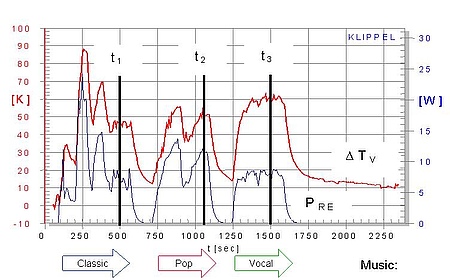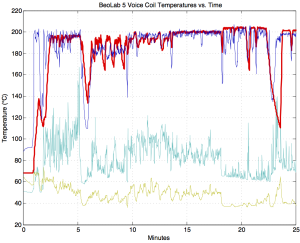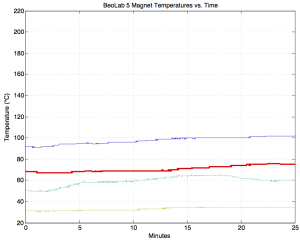I've had a couple of drivers that changed after burn-in (and or usage).
Mostly tweeters but also an occasional woofer and even 2 headphone drivers.
The tweeters changed sound dramatically and went from sounding as specified to giving no sound at all, which is what I call a dramatic change.
I have had woofers that after a burn-in (playing quite loud for a prolonged period, often well after the break-in period) that also changed dramatically and started to distort audible and even changed their compliance and became unusually 'stiff' so only some 'crackling' sounding upper midrange came out.
The same thing happened with some headphone drivers which changed dramatically.
From distorted lows to no sound at all.
Do mechanical devices change during usage ? Of course, could that be audible ? of course but could in specific cases in lab test conditions is not the same as does in all cases.
Does wear and tear exist ? Oh yes.
Is wear and tear burn-in ? I think wear and tear is not burn-in. Burn-in is a relatively very short period prior or during first usage in which parameters settle close to the expected/designed parameters. Nobody designs something so it only starts to perform optimally after weeks, months of years of usage.
Does temperature make a difference ? Of course it does, for home hifi the range will be just 20 degrees C. For headphones also used as ear warmers and worn in hot summers as well. Sure that'l make a difference. The foam inside ear pads alone can react very different alone. Will people notice substantial differences and remember how the same song sounded half a year ago in the cold at maybe a different level ?
Is pro usage different from home usage? You bet it is.
Can 20Hz at 110dB produce an audible 20kHz harmonic ? yes, maybe it can but am sure even if that harmonic (and the 2nd to 99th are not there which is a tall order) even at 100dB SPL I cannot hear but would be able to measure. Has nothing to do with burn-in but is a perception thingy.
I agree with some of the things
@Thorsten Loesch talks about but the thing with burn-in is that changes occur slowly in the same time period humans can get used to a sound signature. Not weeks or months. A lot of the 'things' people (claim) to hear and ascribe to 'burn-in' are, more often than not, be blamed on owners getting used to a sound 'signature' rather than what they believe is 'burn-in'.
A confounding difficulty is that while burn in exists (the period in which the device starts to operate close to designed parameters) it is very hard to prove as the difference is not instant and you cannot go back to the initial state and compare.
Using 2 devices from the exact same (driver) production run and measuring them directly for all specs (in which both drivers receive a part of the break-in period) and then break-in one of them and measure it over time is the only real evidence. It would be very hard to compare those by ear because of practical issues.
The practical question is not whether or not mechanical components (drivers mostly) change from the moment they were created to normal every day usage.
They will. Nobody will deny that.
That there will be changes due to wear and tear (which I would not call burn-in or break-in) also is not denied here. We all (should) know this occurs.
The question is whether or not this is audible and to who in what circumstances.
The biggest variable in this case is more likely to be perception than an actual change in the devices.
Can it be measured ? Sure
Does it happen ? sure
Will it be audible ? might or might not.
Is perception of owners trustworthy ? Some believe it is others do not.
Yet... all the 'I can hear improvements (mostly not getting worse) is where all reports of 'burn in over weeks, months, even years come from is just that. None of the ones that 'report' long term 'burn-in' can actually go back in time and memory is flawed.
Yes, burn-in and break in is reality. Audibility is perception and is well... more suspect than not.
The question is whether or not one relies on their own findings or is skeptical about long term memory.






